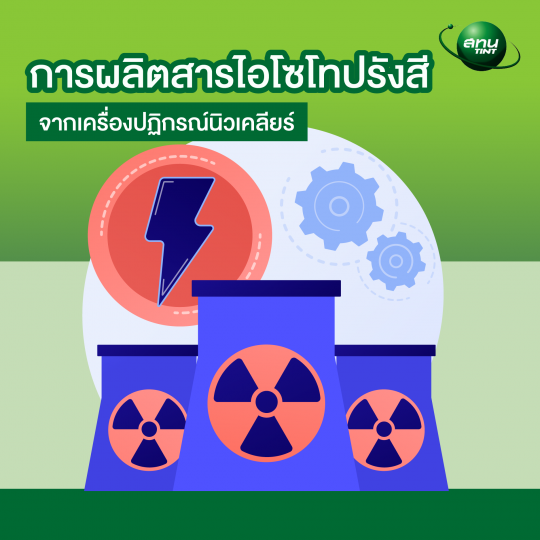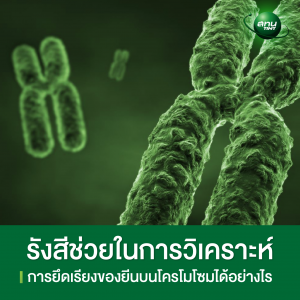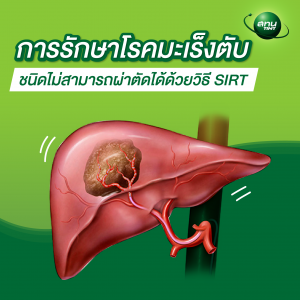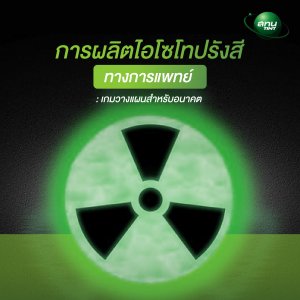ปรานอม คงเพ็ชร์
ศูนย์ไอโซโทปรังสี
สถาบันเทคโนโลยีนิวเคลียร์แห่งชาติ (องค์การมหาชน)
เครื่องปฏิกรณ์นิวเคลียร์เป็นแหล่งกำนิดของนิวตรอน โดยนิวตรอนที่เกิดขึ้นในเครื่องปฏิกรณ์ฯ ได้จากปฏิกิริยาแบ่งแยกนิวเคลียส (nuclear fission) ของแท่งเชื้อเพลิง U-235 ซึ่งเกิดปฏิกิริยาลูกโซ่ (chain reaction) ตลอดเวลาที่เดินเครื่อง
เมื่อนำสารตั้งต้น(target material) ซึ่งเป็นไอโซโทปเสถียรไปอาบนิวตรอนที่บริเวณรอบ ๆ แกนเครื่องปฏิกรณ์นิวเคลียร์ เมื่อนิวตรอนชนกับนิวเคลียสของสารตั้งต้น ทำให้เกิดการเปลี่ยนแปลงภายในนิวเคลียส เกิดเป็นสารไอโซโทปรังสีผ่านปฏิกิริยานิวเคลียร์ต่างดังนี้
( n, γ ) reaction เช่น 23Na ( n, γ ) 24Na
( n, p ) reaction เช่น 32S ( n, p ) 32P
( n,α€) reaction เช่น 27Al ( n,α ) 24Na
secondary nuclear reaction เช่น
| 130Te (n,γ ) 131Te |
|
131I |
ความแรงรังสีของไอโซโทปรังสีที่ได้ ขึ้นกับองค์ประกอบต่าง ๆ ตามสมการ
| A |
= |
Nφσ(1- e-0.693t /T1/2) | |
| A | = | activity of radioisotope produced (dps) | |
| N | = | number of atom of nuclide activated | |
| = | 6.023 x 1023 x weight of target material(g) x isotope abundance molecular weight of target material |
||
| φ | = | neutron flux (n/cm2. sec) | |
| σ | = | neutron capture cross section (barn) | |
| T | = | time of irradiation | |
| T1/2 | = | half-life of radioisotope produced |

เอกสารอ้างอิง
- Irving Kaplan, Nuclear Physics. Second Edition , Addison-wesly Publishing,INC.London 1964
- IAEA, Technical report series No.128,Radioisitope Production and Quality Control,Vienna,1971






